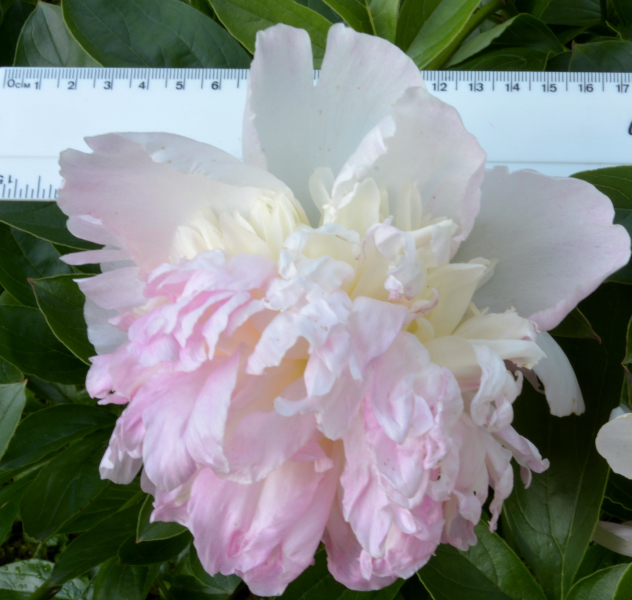The Peoniaceae family is a plant family that includes the genus Paeonia, commonly known for its ornamental and medicinal plants, most notably peonies. This genus includes about 33 species of herbaceous and shrub-like plants, mainly distributed in Europe, Asia, and North America. Peonies are prized for their large, colorful flowers and their traditional medicinal uses.
General Description
Plants in the Peoniaceae family typically exhibit the following features:
- Leaves: The leaves of Paeonia plants are generally compound, alternate along the stem. They are ovate or lanceolate in shape and may be lobed or serrated, depending on the species.
- Flowers: The flowers of peonies are large, showy, and often fragrant, with round, wide petals that can be white, pink, red, or purple. The flowers are typically single and can be either simple or double, depending on the variety. They are commonly used in ornamental gardening for their beauty.
- Fruits: The fruit of the peony is usually a capsule containing numerous small seeds. In some species, the fruit becomes visible after the flower has faded, and the seeds are distributed by animals or mechanically.
- Roots: Herbaceous Paeonia plants have fleshy, rhizomatous roots, while the shrub-like species develop woody roots and tend to have a more upright growth habit.
Chemical Composition
Peonies contain a range of bioactive compounds that contribute to their medicinal and aromatic properties:
- Saponins: The roots of Paeonia contain saponins, which are plant-derived compounds known for their anti-inflammatory and immune-stimulating effects. Saponins have been used in traditional medicine to treat conditions like fatigue, anxiety, and digestive issues.
- Flavonoids: Peonies contain flavonoids, which are known for their antioxidant, anti-inflammatory, and potential anticancer properties.
- Alkaloids: Some species of Paeonia contain alkaloids that have sedative and relaxing effects on the central nervous system, though in lower concentrations compared to other medicinal plants.
- Glycosides: Some glycosides are present in peony plants, contributing to their tonic and soothing properties.
Physical Properties
- Size: Paeonia plants range from small herbaceous perennials to medium-sized shrubs. The herbaceous varieties of Paeonia are typically smaller (about 50-100 cm in height), while the shrub-like species can reach heights of 1.5 to 2 meters.
- Flowers and Roots: Peonies are famous for their large and fragrant flowers, which can be either simple or double. The roots are fleshy in herbaceous species and woody in the shrubby varieties.
- Growth: Peonies thrive in temperate climates, with well-drained soil and ample sunlight. They are hardy and can survive through the winter in many regions.
Production and Harvesting
The Paeonia genus is cultivated primarily for ornamental and medicinal purposes:
- Ornamental Peonies (Paeonia spp.): Peonies are grown in gardens and parks for the beauty of their large, colorful flowers. Peony varieties are widely used in floral arrangements and as garden plants.
- Medicinal Peonies (Paeonia spp.): The roots of certain Paeonia species are harvested for medicinal purposes, especially in some traditional medicine practices for treating various conditions, including inflammation, menstrual pain, and digestive issues.
Applications
Medicinal
Peonies have been used in traditional medicine for a variety of treatments:
- Paeonia is known for its anti-inflammatory and analgesic properties. Peony root has been used in folk medicine to relieve muscle and joint pain, as well as to treat digestive and respiratory disorders.
- Sedative: Some species of Paeonia have sedative effects and have been used to treat conditions like anxiety, insomnia, and stress.
- Menstrual regulator: Peony roots have been used in traditional medicine to regulate menstrual cycles, alleviate cramps, and reduce pain associated with menstruation.
Cosmetics
The antioxidant and soothing properties of peonies are also used in cosmetic products:
- Peony extracts: Peony extracts are used in skincare products for their moisturizing and calming properties, and they are often included in creams and lotions for sensitive or irritated skin.
Culinary
In some cultures, the roots of Paeonia are used as medicinal remedies, but they are not typically used as food:
- However, certain species of peony are used in traditional Chinese medicine in infusions or decoctions to improve digestive health and treat circulation-related issues.
Ornamental
Peonies are primarily cultivated as ornamental plants:
- Peonies (Paeonia spp.) are prized for their large, colorful, and fragrant flowers. They are grown in gardens, parks, and containers to decorate outdoor spaces.
Environmental and Safety Considerations
While peonies offer numerous benefits, there are some considerations to keep in mind:
- Toxicity: While peonies are generally safe for use in traditional medicine, some species can be toxic if ingested in large amounts. It is important to ensure that they are used correctly under the guidance of an expert.
- Sustainability: The harvesting of peony roots for medicinal purposes must be done responsibly to avoid overharvesting wild populations. Sustainable cultivation is key to ensuring their long-term availability.
INCI Functions
- Antioxidant: Protects the skin from oxidative damage caused by free radicals.
- Anti-inflammatory: Reduces inflammation and soothes irritated skin.
- Calming: Known for its soothing properties, especially in traditional uses for the skin.
Conclusion
The Peoniaceae family is a group of ornamental and medicinal plants of significant value. Peonies are admired for their large, colorful flowers and are also known for their medicinal roots, which are used in traditional medicine to treat a variety of ailments. With proper cultivation and sustainable harvesting, peonies continue to be an important plant in both traditional medicine and as a valuable ornamental plant for gardens and floral arrangements.
![]() Peoniaceae
Peoniaceae 

